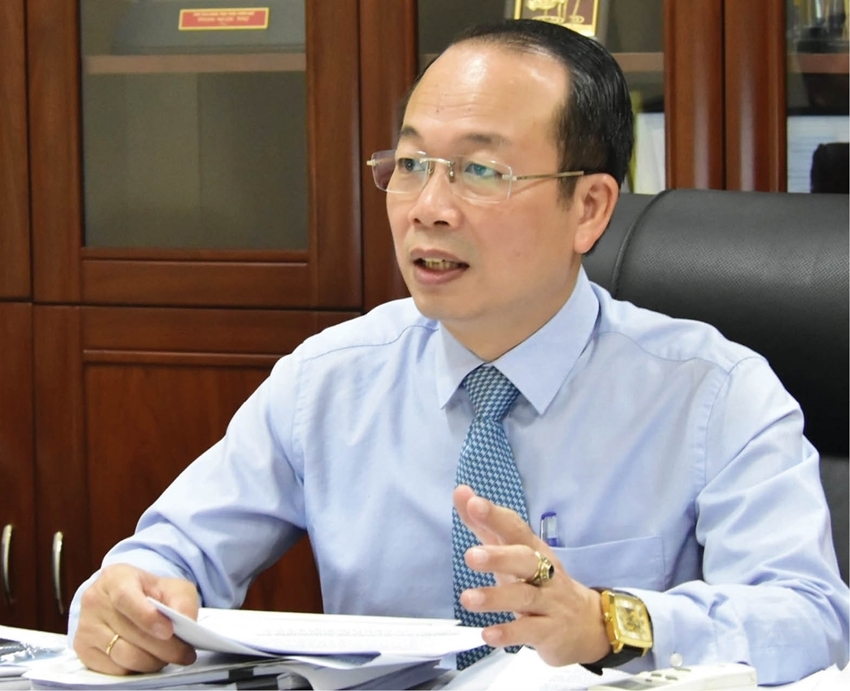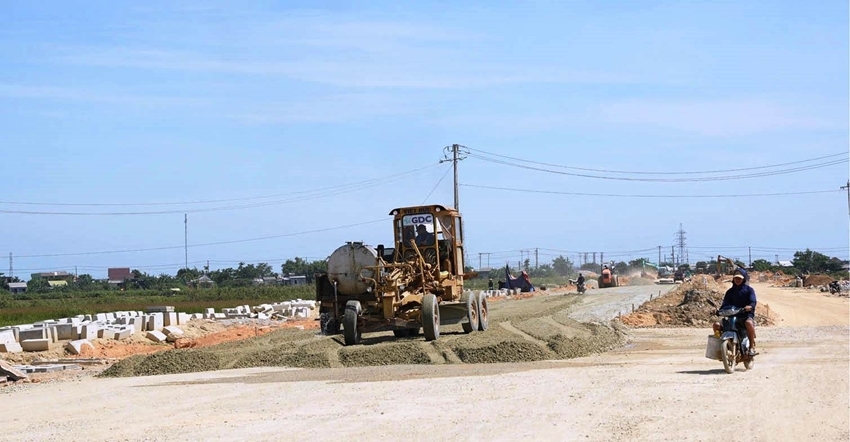    |
 |
| Mr. Phan Quy Phuong, Vice Chairman of the Provincial People's Committee. |
In the context of the province's aim to become a centrally-governed municipality, how will the directions for public investment impact this goal, Sir?
To realize the goal of becoming a municipality by 2025, the province has been actively mobilizing, allocating, and utilizing all resources efficiently to speed up economic and social development. In this regard, public investment continues to play a leading role, acting as a catalyst to attract and spread social capital.
Concentrating investment in key projects will provide motivation and regional connectivity to enhance production and export activities, aiming for a GRDP growth rate of 7.5% - 8.5% per year and an urbanization rate of 62% - 65% in the 2021–2025 period. This will ensure the construction of Thua Thien Hue as a municipality based on the preservation and promotion of the value of the Ancient Capital heritage and Hue cultural identity, with its cultural characteristics, heritages, ecological features, landscapes, environmental friendliness, and smart by 2025.
Despite favorable factors, the outcomes of public investment and capital dispersal face major challenges. What would you say are those difficulties and the primary “bottleneck” in this area?
The disbursement results of the province have not yet achieved the set targets due to various reasons, primarily obstacles in land clearance work.
The disbursement of public investment capital in the province also faces difficulties and obstacles due to objective factors such as unfavorable weather conditions like heavy rain during the early and late months of the year, resulting in a relatively short construction period of about 7-8 months per year; material prices fluctuate; and project owners often focus on completing procedures for new projects slated to newly set to work. The disbursement of public investment capital will be intensified in the coming months as the projects are to be implemented.
You just mentioned the difficulties in land clearance work. Is this a challenging issue?
The land clearance work still faces many obstacles during the 2021–2025 period. The province continues to implement projects involving significant compensation and the resettlement of a large population with limited manpower.
Despite provincial authorities' attention and requirements for communities to assure land clearing for project implementation and construction progress, there are still issues with the land clearance, compensation, support, and relocation of public investment projects in the province.
    |
 |
| Accelerating the progress of projects will contribute to expediting the disbursement of public investment capital. |
The province faces significant amount of land removal work for the realization of public investment projects, especially in Hue City, where the Hue Land Development Center is in charge of the task under the People's Committee of Hue City and is also the investor in the Hue Imperial City Complex's Conservation, Restoration, and Enhancement Project. This project involves a large-scale land clearance and compensation process affecting approximately 4,973 households.
In terms of public investment, the responsibility of relevant agencies, especially those in leadership positions, is crucial. How has the province dealt with organizational and individual accountability so far?
The province has issued directives on public investment implementation and executive directives requiring projects that have been allocated capital plans (both carried forward and newly commenced) but have not disbursed for construction work in accordance with the regulations by June 30 to be considered for freezing disbursement and transferring funds to other projects with payment capability. The project investors will be held accountable to the Provincial People's Committee for funds transferred to other projects.
Agencies, departments, and investors strengthen their management work and select professionally qualified personnel with strong ethics as well as a sense of responsibility to implement the investment plans of the state budget.
Overall, project investors have made considerable efforts and implemented solutions to overcome difficulties and disburse the planned public investment capital in the context that the locality has to implement many solutions to prevent and control the COVID-19 pandemic.
The year 2023 is considered a turning point where many important objectives will be accomplished. Can you share the province's determination to implement investments as well as the measures to promote capital disbursement, aiming to drive economic and social development?
With the implementation and disbursement of the public investment plan in 2023 identified as the most crucial goal to fulfil the tasks of economic and social development, the province has organized the early allocation of the 2023 public investment plan since the end of 2022, providing favorable conditions for its implementation right from the beginning of the year.
The Provincial People's Committee has also issued directives regarding the implementation of public investment in 2023, along with guiding documents for the management and disbursement. Additionally, the province has maintained the operation of four task forces led by the Chairman and Vice Chairmen of the People's Committee, with the directors of relevant departments as members, to provide guidance, urge progress, inspect, supervise, and resolve any obstacles in order to accelerate the projects.
Furthermore, the province has requested departments, sectors, localities, and investors to implement consistent and resolute measures, with a special emphasis on tightening discipline and regulations in the disbursement of public investment.
The district-level Steering Committee for Land Clearance and Compensation has been prioritized to provide focused guidance and coordination with investors to overcome difficulties and obstacles in land clearance, compensation, and resettlement. Investors are required to register and commit to the disbursement schedule for each project.
Leaders have been tasked with monitoring the progress of each project, conducting frequent inspections and supervision of disbursement progress, and developing specific solutions to overcome challenges during task and project implementation.
Support is provided to ensure that investors are kept up with the project's implementation status and disbursement progress; adjustments to capital plans are proposed; and any arising difficulties and obstacles during the implementation process are reported for timely resolution and handling.
Thank you for your time!
